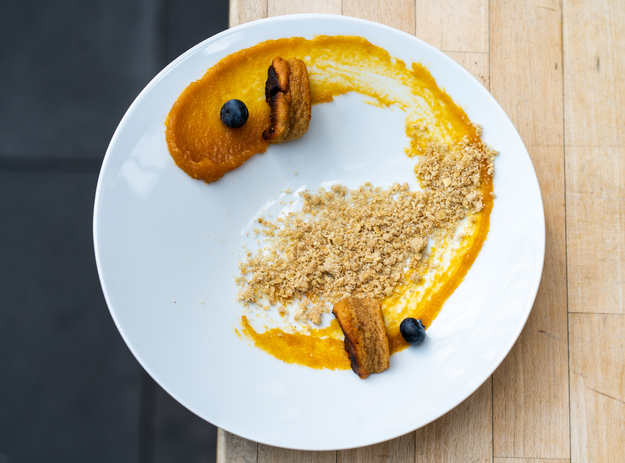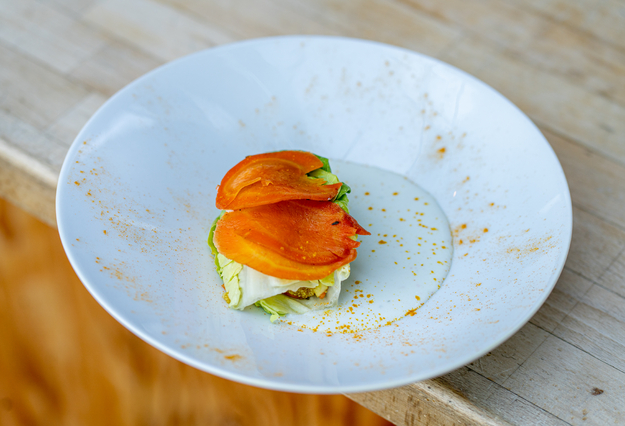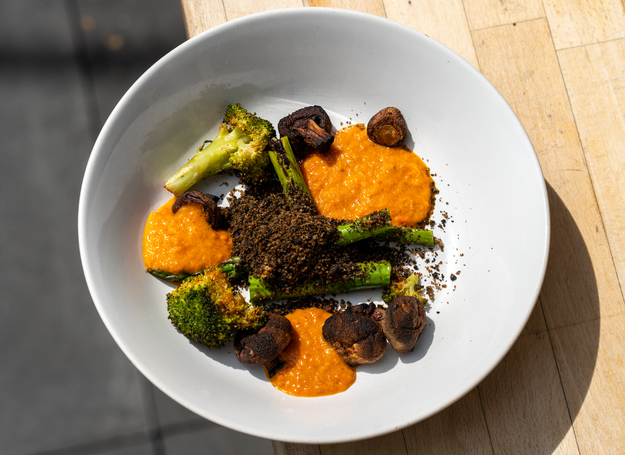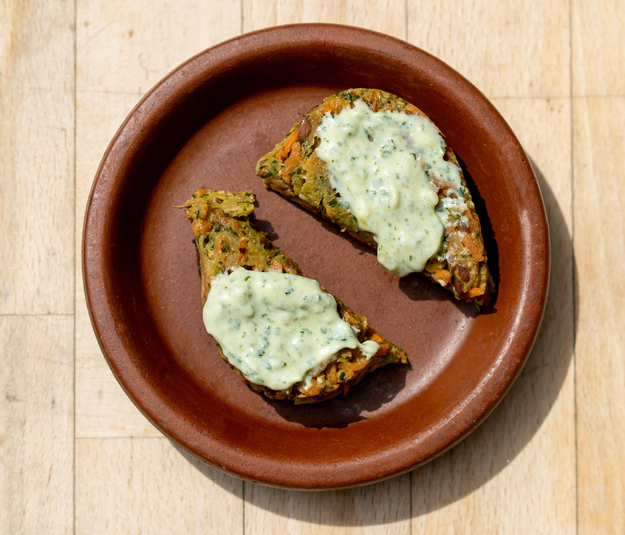The Dog Dinner is a unique fine-dining experience that celebrates the bond between humans and their beloved canine companions. In occasion of the event, Mediamatic's head chef Panos Fakos was asked to devise a vegan 3-course menu. Similar to humans, dogs are omnivores and can thrive on a vegan diet. “When I found out about the project, I got very excited cause I found it a very funny idea. I haven’t done anything similar before. I am intrigued by the whole concept of humans and dogs eating together next to each other, I am curious to see how dogs and humans can share and appreciate a common dining experience”. As for the ingredients, “you can expect zucchini, mushrooms and olives, peppers, rice, some lettuce and a pumpkin caramel. It is going to be a three courses plus an amuse-bouche as a welcoming bite.”
Of course, there are some difficulties that can arise while cooking food for both humans and dogs. There are several things that dogs should not consume, and the fact that the menu is vegan makes the task even more complex; “You need to do some research about what dogs should not eat…But there are on the other hand so many things that they can eat, giving space to a certain degree of experimentation; for example, dogs can eat corn, various vegetables, nuts and even peanut butter.”
The project aims to improve relations with other-than-human beings foregrounding new perspectives rooted in trust and respect. To do so, new multispecies practices and rituals should be devised. The Dog Dinners represent an effort in imagining novel non-hierarchical eating practices. Of course, everything is still quite experimental. We can only hypothesize on what the dog’s tastes are like, whether it will be delicious for both species or if both parties will understand the flavor combination. In any case, it is going to be interesting to see how the dogs react to Panos’ food. What Panos really took time to explore is the “fun” component of the dining experience, especially focusing on how to transform it into an amusing activity for the dogs: “I tried to play with different consistencies and food plating. This has also proven to be the most challenging. Dogs cannot use forks or knives; they primarily use their tongues, so food should be reduced into small chunks and sticky components added as a binder. This allows the dog to lick it off without making a mess.”
Panos recalls his childhood, telling us about the meals at his family's house; “growing up, my mother used to own a pet dog. She was a pequinoa breed, who loved to eat whatever we had for food. She used to beg at the foot of the table, and we would always hand something over to her eventually. Of course, we also gave her dog food, but I believe that with those begging acts she just wanted to be part of the family. She would occasionally join us on a chair. My stepfather was very nice to her and showed her a lot of attention. I believe dogs are just too good for us. Whenever you have an imbalanced feeling the dog can always fix you.”
The need to invest time and thoroughly explore what is best to feed our furry companions can be understood as a way to get to know them better. “I support such eating practices. I do not believe in anything that comes in a packet or a tin. However it is a commitment, especially in the case of a plant-based diet; everything needs to be cleaned and pealed. Hard work and time are required, but for sure it is rewarding.”
When asked about his future involvement with the Dog Dinner, Panos says: “I’d love to continue working on this project and try out new things, such as using dog bowls instead of cutlery. The bowl will be familiar to the dog, while the food inside will be familiar to the human, blending perspectives even more together.”
In the hope of having sparked your curiosity, all that remains is to invite you and your dog to partake in this one-of-a-kind dining experience!



